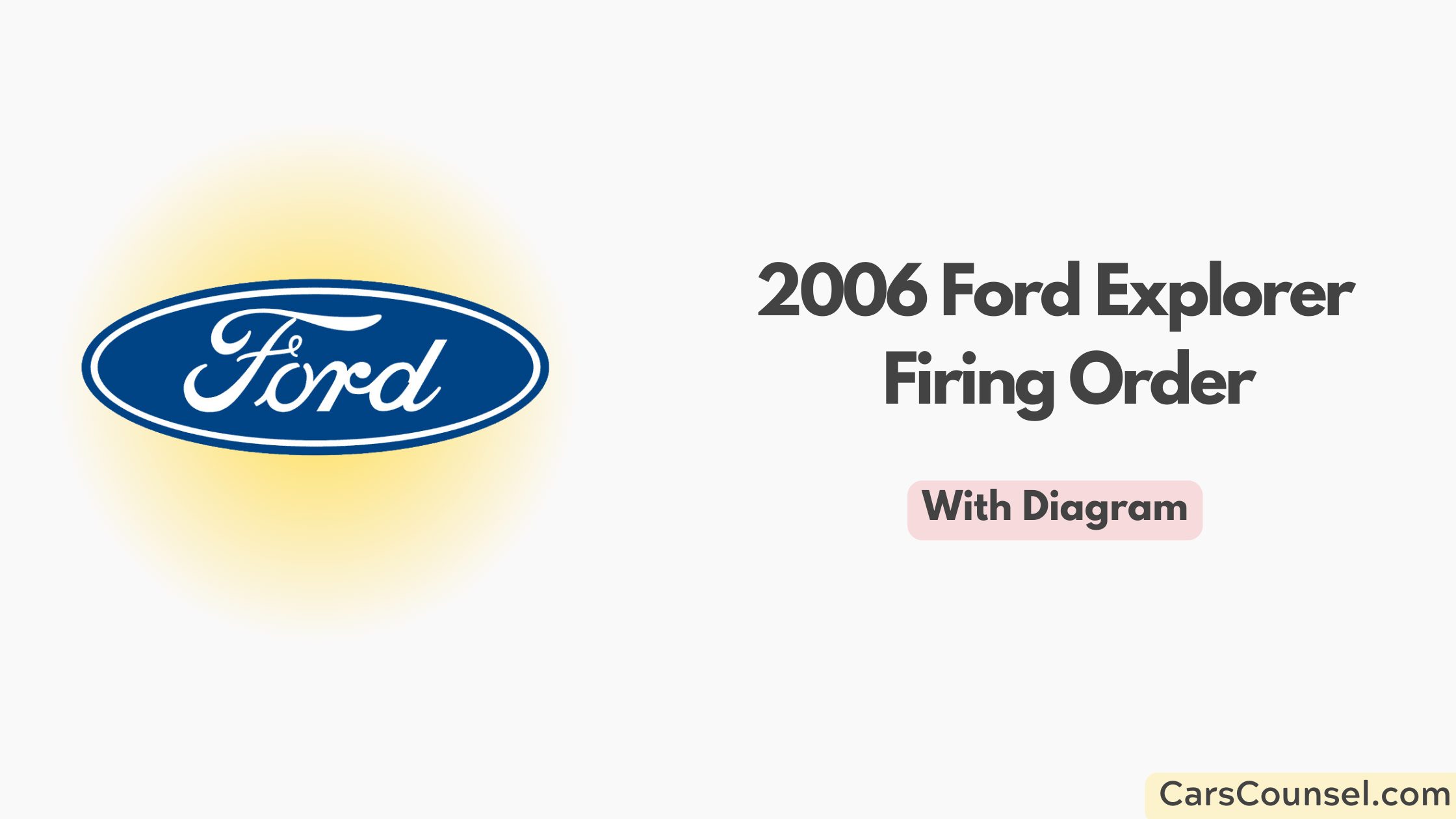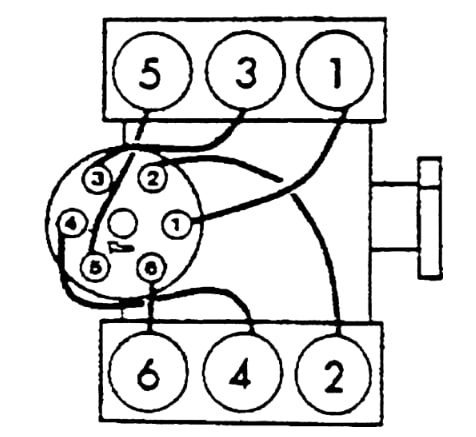The engine of your 2006 Ford Explorer needs the spark plugs to fire in a specific order: 1-4-2-5-3-6. Starting from the front cylinder, this is the sequence they should follow. This sequence helps your car run smoothly and efficiently.

If your engine is acting strange, like making odd noises, not running smoothly, or not accelerating quickly, it might be because of a cylinder misfire. If that happens, you may need to check your spark plugs.
This same firing order can also be found in other cars, like the Ford Edge, Ford Escape, Lincoln MKX, and Mazda CX-9.
Quick Navigation
Key Takeaways
- The firing order for a 2006 Ford Explorer is 1-4-2-5-3-6. This means that the spark plugs fire in this sequence.
- When we say ‘1’ in the firing order, we’re talking about the cylinder at the very front of the engine block.
- Other cars like the Ford Edge, Ford Escape, Mazda CX-9, and Lincoln MKX also use this same sequence.
- Knowing and using the right firing order helps keep the engine running smoothly and helps figure out any engine problems.
- If your car has issues like rough running, not as good gas mileage, or makes popping sounds, it could mean that the cylinders aren’t firing correctly.
Understanding 2006 Ford Explorer Firing Order

Knowing the firing order of the 2006 Ford Explorer is important. The firing order is 1-4-2-5-3-6. This means the spark plugs light up in this order. This is important for taking care of the spark plugs and keeping the engine running well.
The ‘1’ means the first cylinder, which is at the front of the engine block. By following this sequence, you make sure each spark plug lights up at the right time. This is important for keeping your engine balanced and working well. So, don’t forget about it.
Regularly checking the firing order when you’re looking after your spark plugs can help you avoid engine problems and keep your Explorer running well.
Identifying Cylinder Misfire Symptoms
Keeping the right firing order is key to a smooth-running engine, but spotting signs of a cylinder misfire is equally vital. To figure out if a cylinder misfire is happening, you need to know what to look for. Your Ford Explorer’s engine mightn’t run smoothly or might shake when idle. You might also notice less fuel efficiency, a drop in power, or slow acceleration. Odd noises like popping or spitting are another clue.
To find the problem, you’ll need to check the cylinder. A simple look-over might show a broken spark plug or wire. You could also use a tool to diagnose and find a misfire code specific to a cylinder. Keep in mind, catching and fixing a misfire early can stop further damage to the engine. Stay alert and keep your Explorer running well.
Firing Orders in Similar Engines
Did you know that the 2006 Ford Explorer has the same firing order as a number of other vehicles? This includes cars like the Ford Edge, Ford Escape, Mazda CX-9, and Lincoln MKX. The firing order is really important because it helps keep the engine balanced and sets the order for when the spark plugs ignite. If you know about firing orders, you can figure out engine issues and make sure your car runs as well as possible.
Here’s what you need to know about the firing orders for these models:
- Ford Edge and Escape: Even though they’re different in size and strength, they both have a 1-4-2-5-3-6 firing order.
- Mazda CX-9: This car is a great example of how different brands can have the same firing order. It also uses the 1-4-2-5-3-6 order.
- Lincoln MKX: This fancy SUV also uses the 1-4-2-5-3-6 firing order to keep its engine balanced.
Engines with Similar Firing Orders
Conclusion
You now have the necessary information about the firing order of your 2006 Ford Explorer. Don’t let your vehicle become slow and inefficient! Stay vigilant for signs of engine misfires.
Remember, this information isn’t only beneficial for your Explorer, but also for other engines with similar configurations. With this knowledge, you can ensure your engine maintains its balance, and your vehicle continues to run efficiently.
With proper maintenance, you can enhance fuel efficiency and acceleration.

